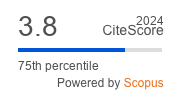Article | Open Access
Digital Platforms as (Dis)Enablers of Urban Co-Production: Evidence From Bengaluru, India
| Views: | 1536 | | | Downloads: | 2739 |
Abstract: This article examines how digital platforms focused on citizen engagement affect urban transformation based on multiple case studies from Bengaluru, India. The research question is: What type of initiatives and designs of digital citizen platforms enable co-production? Co-production is defined as the use of assets and resources between the public sector and citizens to produce better outcomes and improve the efficiency of urban services. The study uses qualitative and quantitative approaches. Evaluative metrics of citizen engagement in digital platforms are done at two levels: platform metrics and initiative metrics. Each platform is evaluated under several variables that indicate the type of ownership, period of operation, aims and types of initiatives, and impact and levels of engagement. Then, the digital platforms are mapped for the extent of digital co-production that matches the type of digital interaction with a form of citizen–government relationship. The findings indicate that the orientation of digital co-production, where it exists, seems to be around the dimensions of co-testing and co-evaluation rather than co-design and co-financing. Furthermore, the digital platforms under study primarily view citizens as users rather than collaborators, limiting the scope of digital co-production. The involvement of urban local governments and private partners in a single platform strengthens the degree of citizen engagement, including the scope for co-production. Finally, there is a strong offline counterpart to citizen engagement through digital platforms where true co-production exists.
Keywords: Bengaluru; citizenship; co-production; digital platforms; India; urban transformation
Supplementary Files:
Published:
© Deepa Kylasam Iyer, Francis Kuriakose. This is an open access article distributed under the terms of the Creative Commons Attribution 4.0 license (http://creativecommons.org/licenses/by/4.0), which permits any use, distribution, and reproduction of the work without further permission provided the original author(s) and source are credited.


